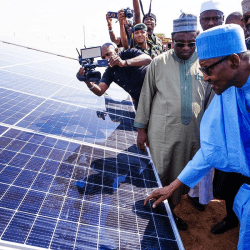🌍 Dire Dawa Wind Farm Project: Ethiopia’s $255M Wind Energy Expansion
The Dire Dawa Wind Farm Project is a $255.48 million investment designed to generate 150 MW of renewable energy. Learn about its location, impact, and investment opportunities.
1. Introduction
The Dire Dawa Wind Farm Project is a key part of Ethiopia’s renewable energy expansion, designed to generate 150 MW of clean wind power. Situated between Djibouti and Addis Ababa, this project is a strategic initiative to strengthen Ethiopia’s power grid and enhance energy security.
Developed under a Public-Private Partnership (PPP) model, the project follows a Build-Operate-Transfer (BOT) approach with a Design, Build, Finance, Operate, and Maintain (DBFOM) structure. This ensures efficient project execution while attracting foreign and domestic investment.
2. Location and Geographic Importance
The wind farm is located halfway between Djibouti and Addis Ababa, about 112 km from the Somalia border.
Key Geographic Features:
📍 Dire Dawa Population: ~440,000 (largest nearby city)
📍 Shinile Town: ~12 km from the project site
📍 Elevation: 900 – 1000 meters
📍 Distance from Djibouti Port: 328 km
📍 Distance from Addis Ababa: 453 km
Why Dire Dawa?
✔ Strong Wind Speeds: The region has excellent wind energy potential.
✔ Industrial Hub: Dire Dawa is a major trade and industrial center.
✔ Cross-Border Trade: Close proximity to Djibouti for potential energy exports.
3. Project Scope and Technical Specifications
Core Project Features
- Capacity: 150 MWac
- Land Requirement: 9,500 hectares
- Infrastructure: New High Voltage (HV) transmission line
- Technology: Advanced wind turbines for optimized power generation
The energy produced will directly feed into Ethiopia’s national power grid, supporting the country’s growing energy demands.
4. Investment and Financial Structure
The total project cost is estimated at $255.48 million, covering:
✔ Turbine and infrastructure costs
✔ Land acquisition and development
✔ Power transmission and grid integration
✔ Operations and maintenance expenses
Potential Funding Sources:
✅ Ethiopian government and state funding
✅ Public-Private Partnerships (PPP)
✅ International renewable energy investors
5. Procurement and PPP Structure
This project will be executed under a Build-Operate-Transfer (BOT) model with a DBFOM structure.
Competitive Bidding Process:
- Private sector partners will design, finance, build, operate, and maintain the wind farm.
- After a 20-30 year operational period, ownership will transfer to Ethiopia’s government.
- Ethiopian Electric Power (EEP) will oversee procurement through competitive bidding.
This PPP structure ensures cost-effectiveness, private sector expertise, and long-term sustainability.
6. Role of Ethiopian Electric Power (EEP)
EEP is responsible for the planning, execution, and supervision of the Dire Dawa Wind Farm Project.
EEP’s Key Responsibilities:
✔ Conducting the feasibility study
✔ Managing procurement and investor selection
✔ Ensuring integration with Ethiopia’s national grid
✔ Regulatory compliance and project approvals
EEP’s involvement ensures efficient management and successful project completion.
7. Ethiopia’s Growing Renewable Energy Demand
Ethiopia’s electricity demand is growing by 10-15% annually, requiring diversified energy sources.
Current Energy Mix:
- Hydropower: 90%
- Wind & Solar: 10% (expanding rapidly)
Ethiopia’s Vision 2030 aims to generate 5,200 MW from renewable sources, with wind energy playing a key role.
8. Economic and Social Impact
The Dire Dawa Wind Farm will:
✔ Create thousands of jobs in construction and operations
✔ Boost local businesses and industries
✔ Improve electricity access for Dire Dawa and surrounding regions
With better energy reliability, Dire Dawa can attract new industries and foreign investors, strengthening regional development.
9. Environmental Benefits
⚡ Reduces Ethiopia’s carbon footprint
🌱 Conserves natural resources compared to hydropower
🌍 Aligns with Ethiopia’s green energy goals
Wind energy is a sustainable, eco-friendly solution for Ethiopia’s electricity expansion.
10. Potential Challenges and Risks
⚠ Land acquisition disputes with local communities
⚠ Regulatory approvals and feasibility constraints
⚠ High initial investment and financial risks
With proper government support and strategic investor involvement, these risks can be mitigated.
11. Current Status and Project Timeline
📌 Feasibility Study: Ongoing (led by EEP)
📌 Bidding Stage: Expected 2025
📌 Construction Phase: 2026-2028
📌 Operational Launch: By 2030
EEP is currently conducting a detailed feasibility study, after which the competitive bidding phase will begin.
12. Foreign Investment and Partnership Opportunities
The Ethiopian government welcomes foreign investment in its renewable energy sector.
Key Investment Opportunities:
✔ Turbine manufacturing & supply chain development
✔ Project financing and infrastructure support
✔ Power transmission and energy storage solutions
Government incentives include tax benefits, power purchase guarantees, and long-term investment security.
13. Ethiopia’s Wind Energy Expansion
With the success of wind farms like Adigala, Ashegoda, and Aysha, Ethiopia is positioning itself as a renewable energy leader in Africa.
How Dire Dawa Compares to Other Projects:
🌍 Kenya’s Lake Turkana Wind Project – 310 MW
🌍 Morocco’s Tarfaya Wind Farm – 300 MW
🌍 Ethiopia’s Ashegoda Wind Farm – 120 MW
Dire Dawa will play a crucial role in expanding Ethiopia’s wind energy portfolio.

1. What is the cost of the Dire Dawa Wind Farm Project?
💰 The estimated cost is $255.48 million.
2. How much electricity will the wind farm generate?
⚡ It will generate 150 MW of renewable energy.
3. Who is responsible for the project?
🏢 Ethiopian Electric Power (EEP) is leading the development.
4. When will the project be completed?
🛠 The feasibility study is ongoing, with full operation expected by 2030.
5. Can foreign companies invest in this project?
🌍 Yes, international investors can participate through competitive bidding.






